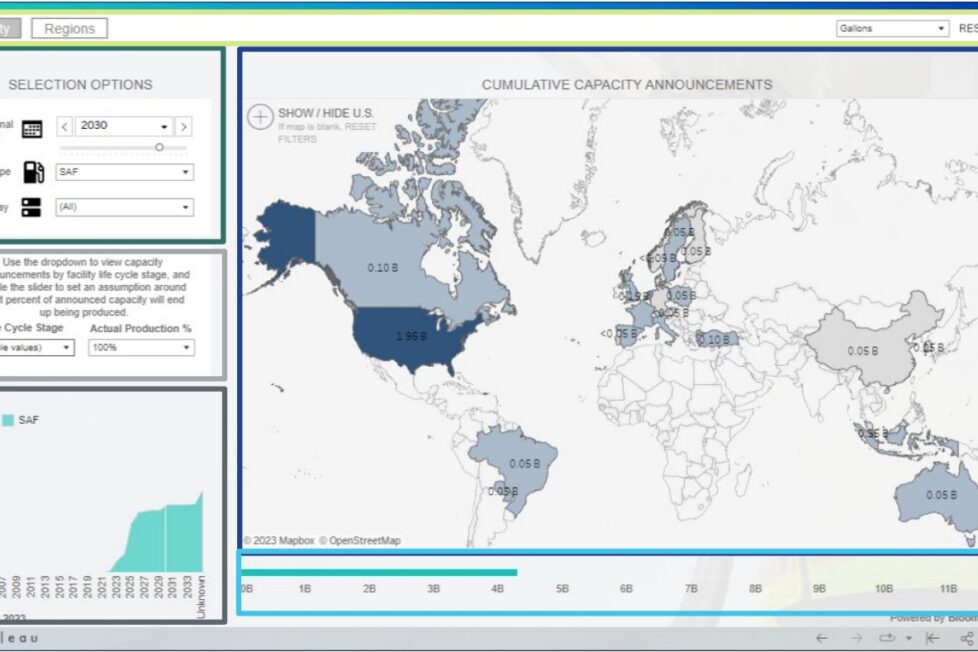Boeing Launches Tool to Track Global Sustainable Aviation Fuel Production Capacity

Aerospace giant Boeing announced today the launch of SAF Dashboard, a new tool enabling users to track expected sustainable aviation fuel (SAF) production capacity over the next decade, and including the ability to visualize forecast SAF use relative to total jet fuel consumption.
The new dashboard follows the public launch by Boeing earlier this year of Cascade, a data tool aimed at assessing various aviation decarbonization technologies to address the climate impact of aviation. Findings released by Boeing using Cascade indicated that SAF will be the greatest contributor to reducing carbon emissions over the next several years, given its ability to be used in current aircraft.
Fuel accounts for the vast majority of the aviation sector’s emissions. Generally produced from sustainable resources, like waste oils and agricultural residues, SAF producers estimate the fuels can result in lifecycle GHG emissions reductions of as much as 85% relative to conventional fuels.
Efforts to meaningfully increase the use of SAF by airlines face significant challenges, however, including the low supply currently available on the market, and prices well above those of conventional fossil-based fuels.
The new dashboard uses data collected by BloombergNEF to collate global SAF capacity announcements and work out how much supply will be needed by production pathway, location, and other metrics. Key functionality includes the ability to filter by country, show cumulative expected production by selected operational date, view announced fuel production changes by date, fuel type and pathway, view capacity announcements by facility life cycle stage and set assumptions about what percentage of capacity will end up being produced, and show cumulative announced production over time.
The dashboard also includes an SAF vs. Jet Fuel Consumption Map, enabling users to see the percentage of SAF being used relative to total jet fuel consumption by region, and based on year selected.
Chris Raymond, Chief Sustainability Officer at Boeing, said:
“SAF reduces CO2 emissions by up to 85% and possibly more over the fuel’s life cycle, offering the greatest potential to decarbonize aviation over the next 30 years. SAF Dashboard portrays the data visually as our industry works together across sectors to increase SAF production for a more sustainable aerospace future.”
The post Boeing Launches Tool to Track Global Sustainable Aviation Fuel Production Capacity first appeared on ESG Today.
The post Boeing Launches Tool to Track Global Sustainable Aviation Fuel Production Capacity appeared first on ESG Today.